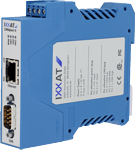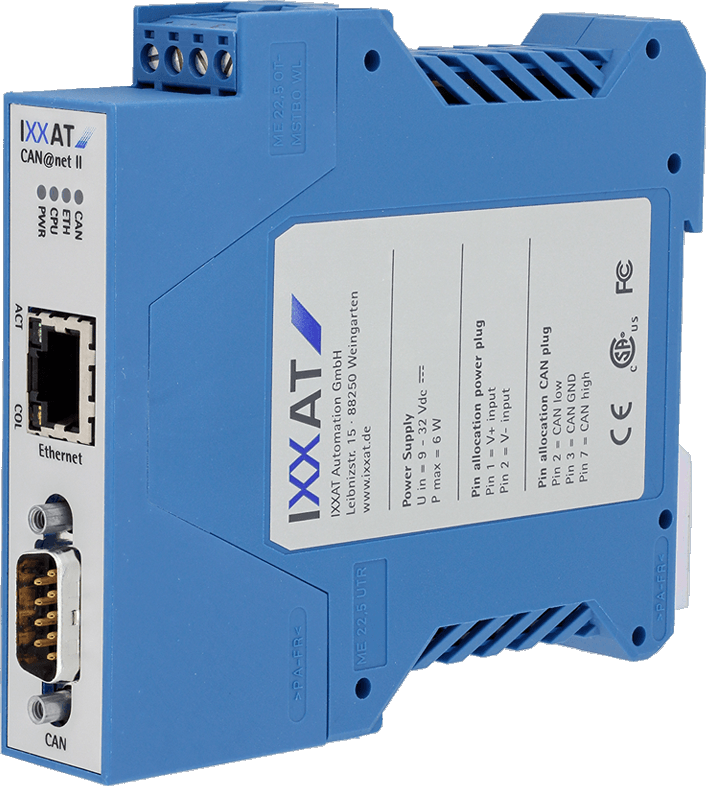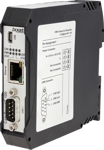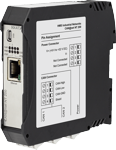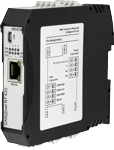CAN@net II/Generic, CAN - Ethernet gateway
Single-channel CAN-Ethernet gateway and CAN-Ethernet-CAN bridge via TCP/IP
Remark: This product is not recommended for new developments.
For new projects we recommend to use the successor product, CAN@Net NT 100
Features and Benefits
- Bridging of large distances and easy system access using Ethernet
- Filter and conversion functionality
- Cost savings due to simple wiring
- Open protocol communication
CAN-to-Ethernet Gateway
In the gateway mode the CAN@net II/Generic is connected to a PC or to a controller platform via TCP/IP. The application program on the host communicates via a standard TCP/IP socket and uses a simple ASCII protocol. As CAN Bus / Ethernet Gateway, the CAN@net II/Generic offers simple, flexible access to CAN bus systems via a LAN or via the Internet.
CAN-to-Ethernet-naar-CAN Bridge
Using two CAN@net II/Generic, a CAN-bus / Ethernet CAN bridge can be implemented. This bridge allows the exchange of CAN messages between two CAN systems via TCP/IP where filter tables can be defined.
Configuration and firmware update
The configuration of the TCP/IP parameters can be performed using a PC tool with automatic device detection. The configuration of the bridge functionality and the CAN communication is supported by an implemented webserver.
| Technical data | |
| PC bus interface | 10/100 Mbit/s Ethernet (10Base-T/100Base-T), Autodetect, RJ45 connector |
| IP address allocation | DHCP, via PC tool |
| Microcontroller | Freescale MCF5235, 150 MHz |
| Memory extension | 8 Mbyte DRAM, 4 Mbyte Flash |
| CAN controller | SJA1000 |
| CAN bus interface | ISO 11898-2, Sub D9 galvanically decoupled (500V) |
| Current supply | 9-32 V DC, 3 W |
| Temperature range | -20 ºC ... +70 ºC |
| Certification | CE, FCC, CSA |
| Housing | Plastic housing for top hat rail mounting |
| Size | approx. 22,5 x 100 x 115 mm |
| Contents of delivery |
| - CAN@net II/Generic |
| - Sample programs |
| - User Manual |
Part number(s)
